Plan Your Visit
- Explore the Charterhouse
- What’s On

Come and discover our unique story which spans more than 650 years and get to know our community.
Welcome to the charterhouse.
The Charterhouse is an active community and home to our residents who are known as Brothers, although no longer exclusively men. We welcome visitors during Opening Hours to our small museum display, Chapel and shop. Anyone who wishes to explore our historic buildings can book a place on one of our Tours to find out more about our story. Tours take place all year round and include outdoor areas, so if booking onto a tour please do come prepared for the day’s weather conditions.
Please visit our Group Bookings page for information about visits for 10 people or more as a private group.
Historic Houses Members should pre-book their free tour online via Book Tours , selecting ‘Charterhouse Tour’, the preferred date and entering the code hhmembers2024 at the checkout. The code is only valid for standard Charterhouse Tours (one hour, charged at £15 full price, or £12 concessions), other tours aren’t part of the agreement with Historic Houses. Please note that Historic Houses Members will need to show their valid membership in person on the day in order to redeem the pre-booked tour.
We run a programme of lectures, open gardens and events. See What’s On to find out more and subscribe to our newsletter for regular updates and special offers. If you are a family with young children visiting us, just ask at the desk if you would like a free printed children’s trail to use in the museum and Chapel.
Charterhouse Square is also open to enjoy from early in the morning until the evening, Tuesday to Saturday. It offers a green space in the heart of the city where you can relax or enjoy a picnic with the backdrop of our historic site.
Please note we do not have a café on site, but there are a wide variety of cafés, restaurants and pubs nearby in Clerkenwell and Barbican.
For further information or to discuss how we can assist you during your visit please contact us on 0203 818 8873 or email [email protected]
The museum, Chapel and shop are open 10.30 – 16.30, Tuesday to Saturday .
Tours take place each day at 11.00 and 14.15 Tuesday to Saturday and advance booking is recommended.
The Chapel is open for regular services at 08.00 and 17.30 each day, and anyone can drop in and take time out in this tranquil space.
As we are a functioning almshouse we may occasionally need to change opening or tour times, or close at short notice. We will give as much advance notice of any changes as possible on our website and social media.
The Charterhouse Charterhouse Square London EC1M 6AN
Tel: 0203 818 8873
Please note : There is no access to the Charterhouse or Charterhouse Square from Clerkenwell Road or Queen Mary University of London Charterhouse Square Campus. If you are having difficulties locating us, you can use the postcode ‘EC1M 6AH’ for the Malmaison Hotel, which is right next door to the Gatehouse entrance and just down from the museum entrance.
The nearest Underground stations are Farringdon (take the Barbican exit from the Elizabeth line) and Barbican.
Buses 4, 56, and 153 stop in front of Barbican station on Aldersgate Street.
There are a limited number of paid parking spaces on the west side of Charterhouse Square.
Entrance to the museum, Chapel and shop is on Charterhouse Square and is step-free and wheelchair accessible. The public areas of the reception, museum display, Chapel, learning centre and cloakroom facilities are fully accessible for wheelchair users and people with limited mobility. There is a lift in the reception area which can be used for visitors to the Great Chamber; please let us know in advance if you require ramp access for a Saturday tour but weekday tours do not require advance notice.
- There are accessible toilet and baby changing facilities but please be aware that there is limited buggy parking. The nearest Changing Places toilets are at the Barbican Centre .
- We have a small number of disabled parking spaces for Blue and Orange Badge holders; please call us in advance to book a space.
- We do not have a dedicated quiet space apart from the Chapel, but you are welcome to get in touch with us before your visit to discuss your needs.
Tour & museum accessibility
The historic buildings of the Charterhouse include some uneven surfaces and a cobbled courtyard. There are easy alternative routes for wheelchair users on all stops on the tour. A wheelchair is available to borrow during your visit and we have portable chairs that you can take with you on the tour.
- We run tours led by a registered BSL guide every few months so please do check our Tours page for information and to purchase tickets.
- Large print guides are available in the museum, and we welcome assistance dogs.
- Our Visual Story also contains visitor information and sensory guide tips and can also be useful for neurodiverse visitors to help plan a visit.
- We have dedicated resources available for visitors with special educational needs.
We welcome any feedback from visitors on how to improve access at the Charterhouse, please contact Museum & Tours | 020 3818 8873 [email protected].
Charterhouse Tour (60 mins): Join a professional guide to discover the evocative remnants of the medieval monastery and the courtyards of the opulent Tudor mansion. Our tours cast new light on well-known stories from British history and introduce our visitors to the unique heritage of the historic Charterhouse – living the nation’s history since 1348.
Brother’s Tour (up to 90 mins): Discover Thomas Sutton’s charity and life at the Charterhouse today in these historic surroundings. These tours are given from the perspective of each individual Brother – no two tours are the same. They provide an in-depth look at the long history of the site and the lifestyle of the Brothers through the centuries and are a unique opportunity to learn more about the nuances of this fascinating historical gem hidden in the heart of London.
Garden Tour (60 mins): Led by a gardener and a Brother, this is a rare opportunity to enter the enchanting secret gardens of the Charterhouse. Hidden away for more than 650 years, the Charterhouse gardens are now revealed in all their glory – an oasis of calm and great beauty where a collection of courtyard gardens gradually unfold, cleverly reflecting different moods and providing colour and interest throughout the seasons. (Spring and summer only)
House and Garden Tour (up to 120 mins): An opportunity to take in the full splendour of the whole site, combining the two main tours described above. (Spring and summer only)
Family Tour (45 mins): Join us on a journey through the Charterhouse as we look for Thomas Sutton’s missing Talbots. Discover medieval monks, regal royals, terrible Tudors and naughty schoolboys as we search high and low for cuddly, teddy Talbots. Can you help us find them all?
Art and Historic Interiors Tour (75 mins) A closer and more detailed look at our historic room design and unique artworks collection including our wonderful Flemish tapestry collection, which is not included on any other tour.
The Charterhouse by Candlelight (60 mins) A chance to experience the beautiful buildings lit by candlelight – discover the treasures of the Charterhouse in the early evening with a glass of wine. (October to March only)
British Sign Language Tour (60 Mins)
A British Sign Language tour of the Charterhouse led by our volunteer, Deaf BSL Guide, exclusively for Deaf and hard of hearing visitors, highlighting key features of the Charterhouse and bringing to life its 600 years of history, using BSL.
Book your tour here .
We very much welcome Group Bookings, with a capacity of 20 people per tour (when there are more of you we can arrange to split into two tours). Do get in touch to see how we can accommodate your group travel plans.
Did you know you can now order home-made refreshments for a just a small extra cost per person (prices inclusive of VAT), this includes FREE exclusive hire of our Portal Trust Learning Centre! ( Usual cost £250+VAT per hour)
Please fill out our online Group booking form and we will get back to you shortly. You can also email [email protected] or call 020 3818 8873 to make an enquiry about group bookings.
Group booking form
Min. 10 people, max. 20 people per tour. If your group is larger than 20 people, please state the estimated number, as we may be able to run two tours for you. Final numbers must be confirmed one month before your visit.
Cost per person (Inclusive of VAT) Brother’s Tour: £18 Charterhouse Tour: £12 Art and Historic Interiors Tour: £18 Garden Tour: £15 House and Garden Tour: £27
Terms and Conditions
- We will require a holding deposit of £60 (Charterhouse Tours) or £90 (Brother’s, Garden, Art and Historic Interiors Tours) or £120 (House and Garden Tours) to confirm your booking. This is payable by card, BACS, or cheque. All prices inclusive of VAT.
- The total cost of your visit, based on final numbers of visitors and any refreshments requests, will be agreed one month in advance of your visit. This is to prevent loss of income from last-minute dropouts.
- The balance of payment – payable by card, BACS, or cheque – will be due one month before your visit, except in exceptional circumstances as agreed with the Charterhouse. The holding deposit will be deducted from your final balance.
- The booking will include exclusive free private hire of the Learning Centre which usually costs £250+VAT per hour.
- Please make cheques out to ‘Carthusia Ltd’ and post to The Charterhouse, Charterhouse Square, London, EC1M 6AN.
- Once the final balance has been confirmed and the final invoice has been issued, we cannot reduce or amend the final balance or numbers due to last minute group drop-outs, so the full amount will be expected to be paid.
Cancellation Policy
- The Charterhouse operates a no refunds policy on tour deposits and tour bookings if the visit is cancelled by the customer.
- If the event is cancelled by the Charterhouse the customer is entitled to a full refund by the original payment method.
- In the event of a group postponing their visit, any deposit will be retained by the Charterhouse and applied to any rearranged date.
Photography is permitted across the Charterhouse site but we ask visitors to respect the residents’ privacy and not take pictures of people. If you are posting your pictures on social media, please do tag us on X @charterhouseec1 , Facebook @theCharterhouseLondon and Instagram @charterhouselondon .
The Charterhouse is just one of several monastic institutions which dominated the Clerkenwell and Smithfield area during the medieval period. The Monastic Walking Tour includes The Charterhouse, the Museum of the Order of St John , and the churches of St Bartholomew the Great and The Priory and Hospital of St Bartholomew . The monasteries were all closed in the few years between 1536 and 1540, when Henry VIII broke with the Roman Catholic Church. The legacy of these institutions lives on in Clerkenwell and Smithfield in the surviving buildings and in the philanthropic and caring work that is still a major feature of daily life at these landmark sites.
If you are walking in the area do take a moment to enjoy Charterhouse Square, and you may like to explore some of the other historical sites using the tour created by Geo Tourist as part of their Epic England series , which can be listened to if you download their app to your smartphone. You can also book onto a walking tour of Clerkenwell’s Monastic Quarter with Islington Guided Walks .
The London Metropolitan Archives (LMA) is located nearby in Clerkenwell, and holds the records for Sutton’s Hospital, Charterhouse , the majority of which cover the period 1611 – 1993. The LMA is a public research centre which specialises in the history of London, caring for and providing access to the archives of businesses, schools, hospitals, charities and all manner of other organisations from the London area. It also has a programme of events, exhibitions and conferences.
- Google Plus
Absolute gem of a building, fantastic history & just a brilliant place. In amongst all the hustle & bustle of the city of London a little bit of tranquility.
You may also like…

What's On at the Charterhouse?
Keep an eye on the events and special tours we have coming up through the seasons on our What's On page continue

Discover our Collections
We have a fascinating collection brought together over the centuries - including paintings, books, furniture and many items indicating the different incarnations of the site. continue
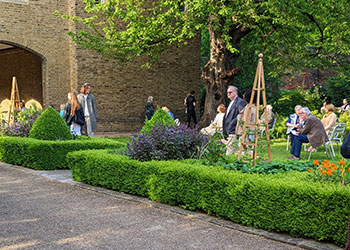
Support the work of the Charterhouse by becoming a Friend or making a one-off donation. continue
Sign up to receive our newsletter and keep up to date with the Charterhouse

Site Search
The Charterhouse
A historic complex of buildings in Smithfield, London, dating back to the 14th century and home to the famous almhouse.
Smithfield, London
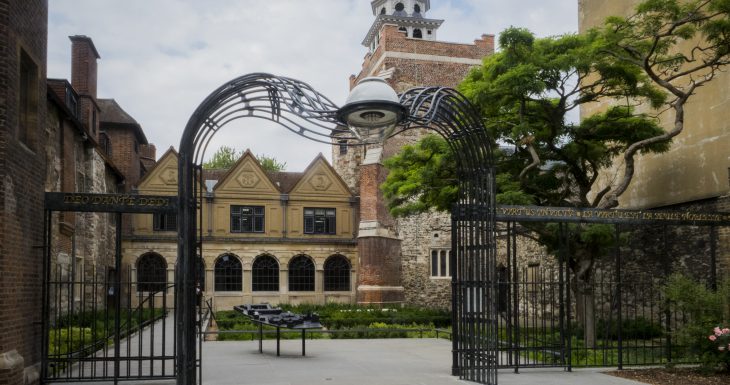
Experience this house
- Accessible loos
- Accessible parking
- Easily accessible without car
- Facilities for children
- Mostly wheelchair accessible
- Picnic area
- Hearing loops
- Large font signs and leaflets
- Guide dogs welcome
- Wheelchair ramps/routes
- Accessible toilets
- Access statement available
Set in the heart of Clerkenwell, the Charterhouse has been living the Nation’s history since 1348.
Initially a Black Death burial ground, the site became home to the largest Carthusian monastery in the world until it was brutally dissolved in 1537 when 16 monks became proto-martyrs of the Reformation.
A grand Tudor mansion replaced the monastery. Elizabeth I spent the first days of her reign at the Charterhouse and James I (of England) created 133 Barons in the Great Chamber prior to his coronation.
In 1611 Thomas Sutton acquired the mansion and site to house his new Charity, an almshouse and school. The school separated and moved out of London in 1872 but the almhouse thrives to this day amidst the medieval, Tudor, Jacobean and later architecture that makes the site so fascinating.
Please note: The information on the Historic Houses website is advisory, but please always check the website of the house or garden you intend to visit before travelling.
Museum: All year round, Tuesdays to Saturdays, tours at 11am and 2:15pm.
We are open 10.30am to 4.30pm and basic admission to the Museum and Chapel is free.
We also have two guided tours a day, Tuesdays – Saturdays – see details here .
Historic Houses Members must now pre-book online for their free tour at https://thecharterhouse.org/visit-us . Members should select ‘Charterhouse Tour’ and their preferred date and enter code hhmembers2024 at the checkout. This code is valid only for a free Charterhouse Tour – one hour, usually charged at £15 full price, £12 concessions (other tours are available but not free for members). You will still need to show a valid membership in person on the day in order to redeem your free tour.
We can schedule our regular or specialist guided tours for groups of up to 40 people, and we can also offer catering options ranging from tea and coffee to a light lunch. Group bookings (minimum of 10 people) are subject to a deposit payable in advance of the tour. Attendance must be confirmed one month in advance.
Prices are inclusive of VAT. Terms and conditions apply.
Please book here using the online form (scroll down to Groups) or contact us with any queries you have on:
[email protected] or call us on 0203 818 8873
The Charterhouse is an amazing place for pupils to learn about the changing face of England. From monks to monarchs, discover the fascinating stories of those who have helped shape the history of our nation. We have sessions available for KS1 and KS2 pupils and we also have a variety of online and downloadable resources. Book your school trip now!
Please book here using the online form or contact us with any questions you have on:
[email protected] or call us on 0203 818 8873
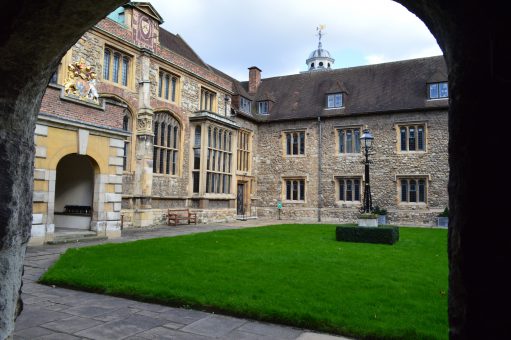
The pensioners who live in the almshouse here at the Charterhouse are very pleased to share their extraordinary home and its unique history.
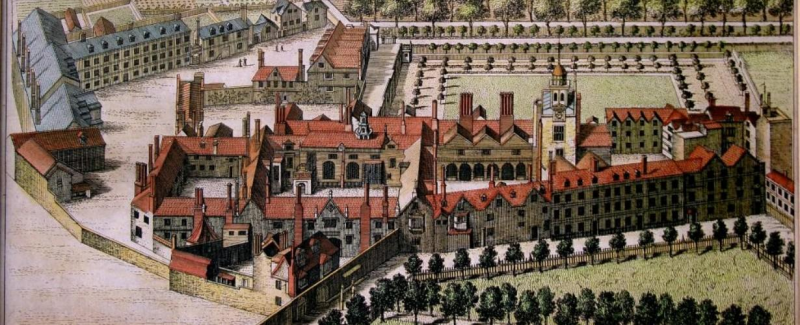
Getting here
Between the Barbican and Smithfield Market in Charterhouse Square, London EC1.
London Underground (Barbican and Farringdon) Circle & Hammersmith and City Line.
Rail Thameslink – Farringdon.
Buses 4, 56, 153 (all stop at Barbican Station).
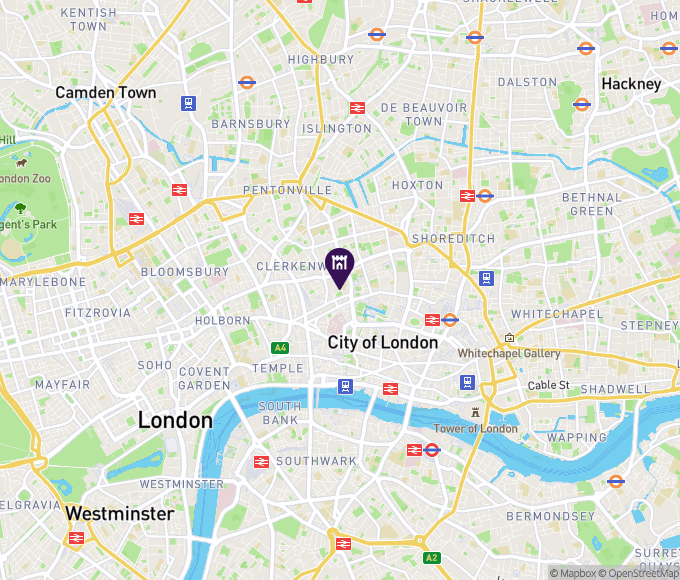
Forthcoming events
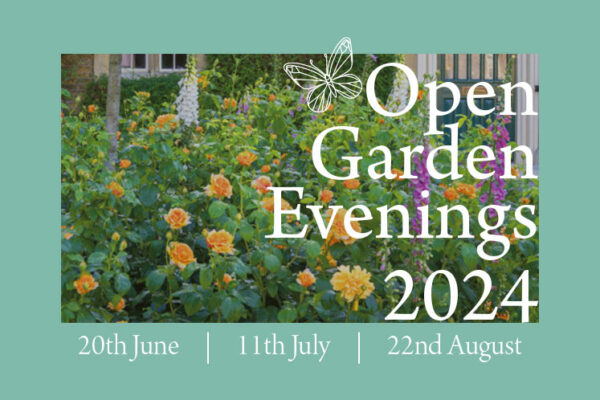
Open Garden Evenings
Become a historic houses member.
Explore the nation’s heritage from just £68 per year.
Hundreds of the most beautiful historic houses, castles, and gardens across Britain offer our members free entry.
Also: receive a quarterly magazine, enjoy monthly online lectures, get exclusive invitations to buy tickets for behind-the-scenes tours, and take up a range of special offers on holidays, books, and other products you might like.
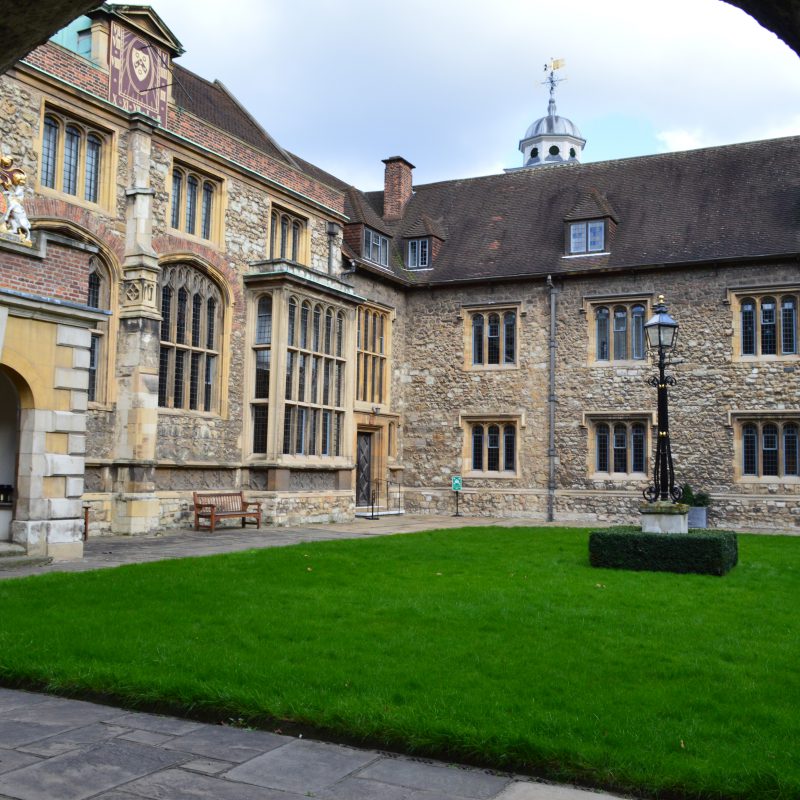
Sign up for our newsletter
Read more of our stories, receive exclusive content, and find out what’s on.
You can unsubscribe at any time by clicking the link in the footer of our emails. For information about our privacy practices, please visit our privacy policy .
" * " indicates required fields
Member Login
Forgotten your password?
Register to login
All members (except house and corporate members) need to register for an online account to be able to log in to the site. If you are a house or corporate member, contact our offices.
If you have already registered an account and still can’t login, try setting a new password by clicking ‘Forgotten your password’.
Not yet a member?
In order to view our online lectures and other members-only content, and access hundreds of Historic Houses for free, you’ll first need to become a member.
The Charterhouse Ticket Portal
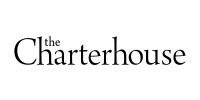
- Home Visit our homepage
- My Account Manage your details
- FAQs Got a question?
- Call us 020 3818 8873
- Email us [email protected]
- Visit our website http://www.thecharterhouse.org
Charterhouse Tour

Join us for a professional guide led tour to see the highlights of the Charterhouse, taking in the evocative remnants of the medieval monastery and the courtyards of the opulent Tudor mansion. Discover Thomas Sutton’s charity and life at the Charterhouse today in these historic surroundings, including the Great Hall where the Brothers sit together to eat their meals.
Charterhouse tours cast new light on well-known stories from British history including the plague, religious Reformation, Tudor intrigue and the Blitz, and introduce our visitors to the unique heritage of one of London’s hidden gems – living the nation’s history since 1348.
Tours last for 60 minutes and cost £15 per person, £12 concession
Concessions are available for disabled people, full-time students, over 65s, and UK unemployed. Please note you may be asked to provide valid ID for concessions.
Prices are inclusive of VAT
Group bookings available upon request. For group booking enquiries, please complete our group booking form available here: Plan your visit - The Charterhouse (please scroll down to the section with the heading ‘Group bookings’)
Ticket options
- Charterhouse Tour Charterhouse Tour £15.00 1 20 max
Concessions: people with disabilities, full-time students, over 65, UK unemployed
You've selected 0 items
- Call us : 020 3818 8873
Our payments are processed using : PayPal
- Privacy Policy
- Terms & Conditions
- Accessibility Statement

I'm having trouble with my purchase!
Tell me more about DigiTickets!
Our website uses necessary cookies to complete your checkout.
We would also like to set optional cookies for analytics to help make improvements to the website and for marketing purposes. These will be set only if you accept below.
For more information please see our Cookie Policy within our Privacy Policy .
- Things to Do
- Restaurants
- Holiday Rentals
- Travel Stories
- Add a Place
- Travel Forum
- Travellers' Choice
- Help Centre
London's Best Kept Secret - The Charterhouse
- Europe
- United Kingdom (UK)
- England
- London
- London - Things to Do
- The Charterhouse
London's Best Kept Secret
The Charterhouse is a secret gem in the heart of London. Full of history with a friendly, welcoming presence. I was lucky to attend an open garden evening and although it was a wet evening the atmosphere made up for it. Staff and volunteers we're helpful, friendly and egger to answer any questions. I will be returning for the House Tour ASAP. and have already recommended to friends and family that this amazing place is a must for your bucket list.
Thank you very much for your review - and we really appreciate your recommendation to friends and family!
This is a gem in the heart of the city dating back to the 13th century. The guided tour was very good in that it took in all the historical features of the building. Well worth a visit
The guided tours of The Charterhouse really are a wonderful glimpse back through time at Tudor London, and I’d highly recommend the tour to anyone with an interest in the history of London. The tours only began a few years ago and had to be paused due to the pandemic (given the elderly residents). Happily they have recently restarted and I was fortunate enough to be on a tiny tour with just five people in June 2020 (again, due to Covid restrictions). Hopefully they will be able to resume larger tours soon. There are several tours to choose from, I did the House Tour with a professional guide (there are also Brothers tours & tours with the gardener, which I’ll do another time). The tour was highly informative about the complex and fascinating history of the site, but also a chance to have a privileged look behind the scenes at the beautiful courtyard buildings. Very good value at £15 for slightly over 1 hour tour plus access to the chapel and small museum.

Thank you for your very kind review. Very glad you enjoyed your visit!
Old fashioned building with amazing park and grounds... we often walk through in the evening if the gate is open.
One of the joys of exploring London is turning a corner and finding a unique piece of history. One such finds is the Charterhouse which had a varied early history. The site was the location of the cemetery for those who had died in the Black Death of 1348-9, then developed as a Carthusian priory, before becoming a grand family home after the Henry VIII's Dissolution of the Monasteries - it is this rebuilding of 1545 that is the core of what we see today. The property was acquired in 1611 by Thomas Sutton from the Earl of Suffolk and Sutton established a hospital and a school here and, on his death, he established an endowment which which was hotly contested by his family, but upheld in the courts. The School, Charterhouse, moved out to Godalming in Surrey in 1872 and the property has had varied uses, but the almshouses remain to this day. There is a model of Charterhouse as you enter the garden. While Charterhouse is still in use today, you can enjoy the garden, the excellent museum and the historic chapel for free and there are guided tours of the main historic buildings and of the gardens. The memorial to Thomas Sutton in the chapel is particularly fine and you will spot carved greyhounds all over the place - taken from his coat of arms. Definitely worth visiting, and the volunteers and exceptionally knowledgeable and friendly.

Beautiful place, lovely square in which it is located. (As an incidental bit of tat, for Poirot lovers (I mean the TV series with David Suchet), his "Flat" features in Charterhouse Square.) £20. Tour is normally led by a "Brother", who is NOT a monk, just someone who lives there now. It's basically an almshouse and a care home, and nothing to do with Charterhouse School since 1872. Fox and Anchor (2 mins away) is a pretty good "English Pub" to visit for lunch afterwards.

Posted on 8th August 2022 Categories London History
By: Author Lauren Kendrick
The Curious History of the Charterhouse in London
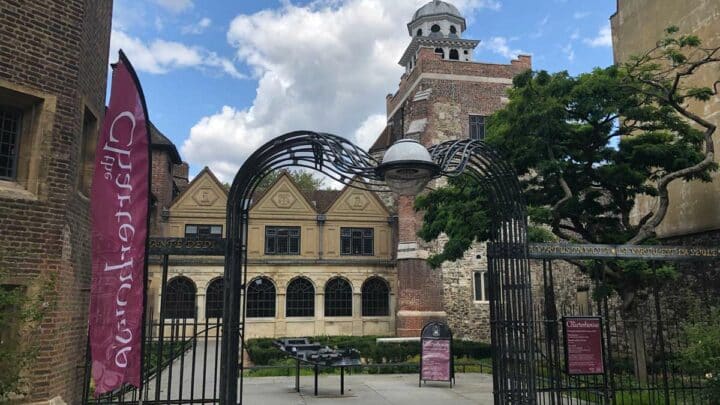
Love This? Save and Share!
Looking to explore the Charterhouse? This eccentric London spot has many tales to tell, here’s everything you need to know before you visit.
The Charterhouse in London has an intriguing past that dates back to long before it was the Charterhouse– and it’s quite eerie.
There are plenty of places to visit at the Charterhouse too, including a museum, chapel, gardens and the great chamber.
Ready to explore?
First of All… What is the Charterhouse?
View this post on Instagram A post shared by The Charterhouse (@charterhouselondon)
Well, the Charterhouse has been many things over the years since it was first built in 1371. It’s been a monastery, a grand Tudor mansion, boys school, and now an almshouse.
What’s an almshouse? Essentially it’s a housing charity.
Thomas Sutton was an English Servant and businessman who set up the charity in 1611. With sixteen Governors who are the charity trustees and meet three times a year. Since 1611, the Charterhouse has provided accommodation to the community, known as the Brothers.
What Does the Charity Do?
The charity provides a much-needed home and cares for people over 60 who are in financial and social need and can live independently.
Did you know that there are over 2000 almshouses in England? Nope, neither did we. But, what makes the Charterhouse’s almshouse so unique is its sense of community.
Beneficiaries live in private flats, they come and go as they please. Yet, still choose to eat most of their meals in the historic 16th Century Great Hall joined by members of staff and get involved in a community book club and keep fit sessions.
What Settled Practices Does The Almshouse Have?
Up until 2018, all residents were men– hence the community being called the Brothers and still is today. Almshouse is happy to finally have female residents and hopes that many more women continue to join the community.
The place of the Chapel in community life is well respected by all members of the community. Although not all members are Christians, the saying of grace at lunch is important to maintain its Church of England Origins.
Who Can Become a Brother?
As welcoming as the Almshouse is, there is a strict criterion that you must meet in order to become a part of the community.
You’ll need to be single and over 60. You should be in financial, housing and social need with no significant debts. Being able to live independently is crucial and wanting to contribute to the community helps.
The History of Charterhouse London
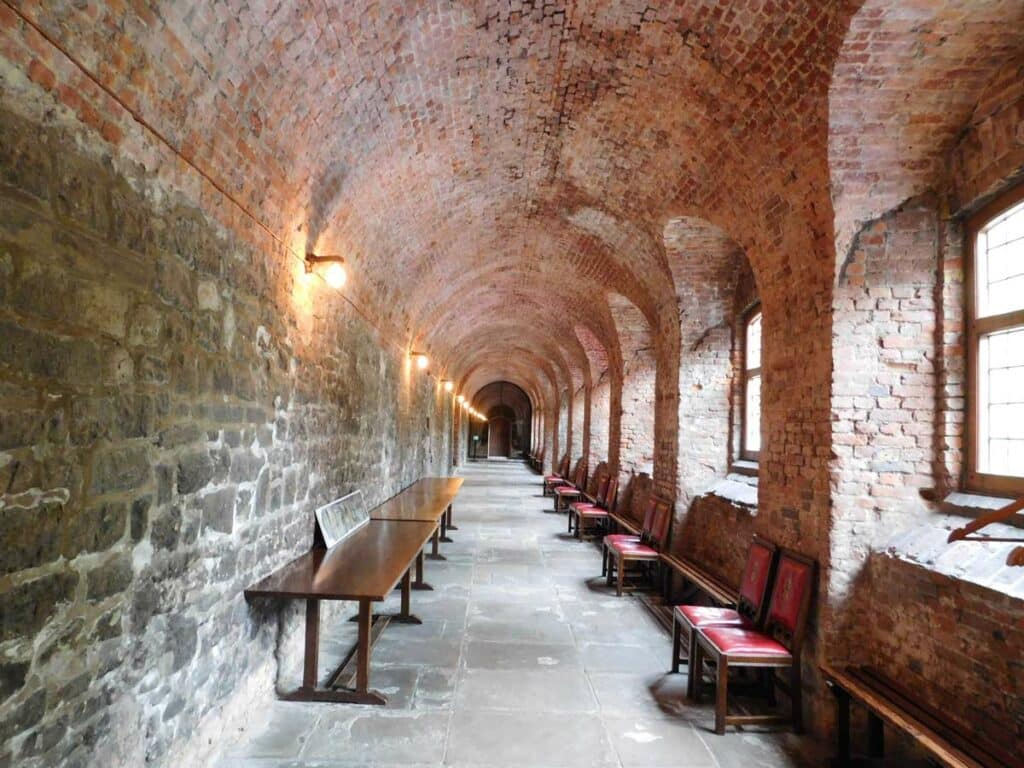
The Charterhouse’s history is very rich and dense, so strap in whilst we travel back to 1348.
It was mid-way through The Black Death when the land was used as a burial site for victims of the bubonic plague. Gruesome, we know, we can’t promise that it’s not haunted by ghosts. Some years later, in 1371, the Charterhouse was built.
Its first life was as a Carthusian Monastery, which flourished through the later medieval and early Tudor periods. Then came the dissolution of the monasteries between 1536 and 1541, and with this, the Charterhouse transformed into a mansion for wealthy noblemen and a refuge for royalty.
Royal Happenings at The Mansion
Elizabeth I met the Privy Council at the mansion in the days before her coronation in 1558. Later, James I used the Great chamber to create 130 new Barons before he was crowned.
Who is Thomas Sutton and What Did He Do?
Thomas Sutton was an English servant and businessman, and in 1611 he bought the mansion and founded the Charterhouse. He established the Thomas Sutton foundation that now bears his name.
Thomas Sutton’s will provided up to 80 Brothers that were either decrepit, old or captains at sea or at land, maimed or disabled soldiers, merchants fallen on hard times, or those ruined by shipwreck as well as creating Charterhouse School.
Charterhouse School is one of nine English public schools, it moved to its Godalming site in 1872 but kept a strong relationship with the Charterhouse with representative observers sitting on the Governing Board.
James I retained his connection with the Charterhouse and became the first Royal Governor of Thomas Suttons Foundation. Since then, Wellington, Gladstone and Cromwell have also been Governors.
The Charterhouse also has a literary past, appearing in Daniel Defoe, Charles Dickens and William Makepeace Thackery’s writings.
What Can I Do at The Charterhouse?
Discover the Charterhouse’s vibrant history through 120 objects at the museum. The museum displays start in the present day and travel backward to reveal a fascinating tale of history.
Explore The Great Chamber, it played host to grand royal occasions and was the backdrop for Tudor plotting and intrigue. It’s the only Tudor great chamber to survive in London and you should visit the charterhouse in London for this alone.
Visit the English country-style gardens with roses, herbaceous borders, ancient mulberry trees and a small pond. The Gardens are for exclusive use for the Brothers but can be booked for private tours.
The Chapel services are open to the public and the Gatekeeper is happy to admit anyone who would like to attend services on weekdays and Sundays.
Practical Tips for Visiting the Charterhouse
- The Museum runs two tours daily, Tuesday through Saturday, you must book before you visit. You can book a tour of the Charterhouse here .
- The Charterhouse is open from 10.30am to 4.30pm Tuesday through Saturday.
- The nearest tube stations are Barbican and Farringdon – the Charterhouse is a short walk from both stations
- You can book family activities at the Charterhouse including arts and crafts and an exclusive meet and greet with Queen Elizabeth I.
London Charterhouse: Map
Charterhouse London: Read More History Guides
- The Hidden Secrets of Fulham Palace
- Did You Know You Can See Jeremy Bentham’s Head at UCL?
- The Secret Masonic Temple Hidden in Central London
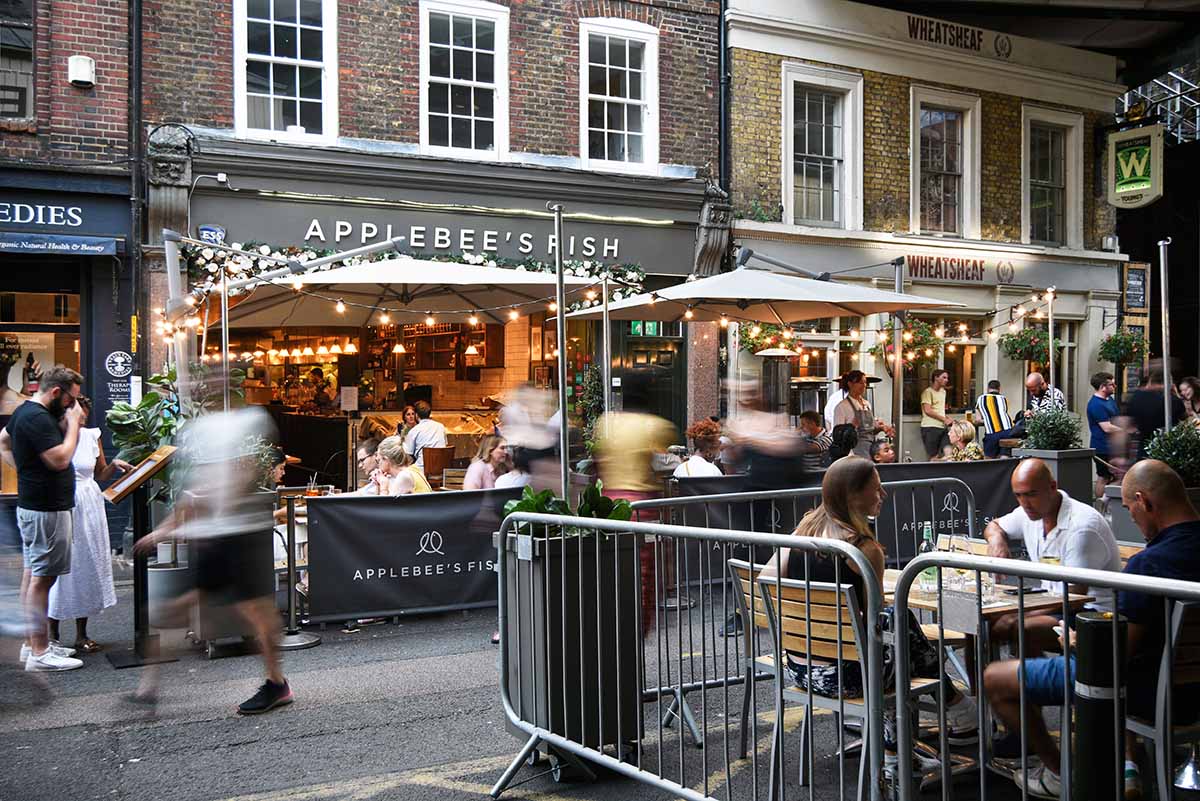
LET'S GET SOCIAL!
London x London is the insider’s guide to discovering the best of London.
We delve into the cool, interesting and quirky spots that make London such a dynamic city, telling you the best things to do, eat and drink along the way.
Tired of the same old dull suggestions? Want to know where to find London’s secret bars, tastiest eats and weirdest finds? We provide practical guides that help you do just that.
Find Out More
Recently Published
- Eltham Palace: Discovering South London’s Gorgeous Art Deco Secret
- Staying At: The Laslett, Notting Hill Review
- Carreras Cigarette Factory: A Curious Reminder of London’s Egyptian Art Deco Craze
We use cookies to make your website experience better. Please confirm you accept the use of these cookies. To find out more about the cookies we use, please read our cookies policy
The Charterhouse
- Attractions
- Green Spaces
thecharterhouse.org
Charterhouse Sutton's Hospital The Charterhouse Charterhouse Square London EC1M 6AN
The Charterhouse has been living the nation’s history since 1371. Encompassing seven acres between Barbican and Farringdon, the Charterhouse has been a monastery, a Tudor mansion, a boys’ school and an almshouse, which it remains to this day. There is a free museum and access to the Chapel, as well as several fascinating daily tours, some of which are conducted by almshouse residents. Several of the stunning rooms included on the tour are also available to hire.
Visit the Charterhouse website for information on events, opening times and admission charges.
Listing location
St giles’ cripplegate, the old bailey – guided tour, st lawrence jewry, spear museum of philatelic history, bevis marks synagogue, the london centre, gresham college, barbican centre, barbican cinemas, swingers city, the garden at 120, st bartholomew’s hospital museum, st dunstan in the east church garden, barbican architecture tours, city of london information centre, st bartholomew the great church, city wall at vine street, tower of london, london stone, mansion house, guildhall great hall, prince henry’s room, guildhall yard, london’s roman amphitheatre, guildhall art gallery, barbican conservatory, st mary-le-bow, st. stephen walbrook, city of london guides – daily guided walks, the monument, st paul’s cathedral, dr johnson’s house, st bride foundation, the guild church of st dunstan-in-the-west, all hallows by the tower, bank of england museum, tower bridge, london mithraeum bloomberg space, leadenhall market, the royal exchange.
The Charterhouse

- Barbican • 2 min walk
- Farringdon • 5 min walk

Most Recent: Reviews ordered by most recent publish date in descending order.
Detailed Reviews: Reviews ordered by recency and descriptiveness of user-identified themes such as wait time, length of visit, general tips, and location information.

Also popular with travelers
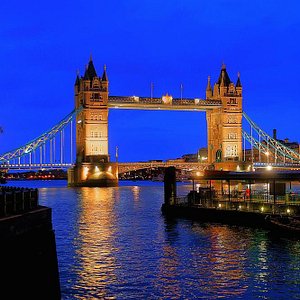
The Charterhouse - All You Need to Know BEFORE You Go (2024)


8 Secrets Of The Charterhouse

The Charterhouse is one of London’s best historical hidden gems.
The site has an astonishingly rich story, going back to the area’s usage as a plague pit, then monastery, Tudor mansion, school and finally the almshouse that still occupies part of the site today.

All of this fascinating, layered and also living history can be seen today.
I will take you through the Charterhouse’s story but via 8 of the secrets you can see here.
1. The Black Death Skeleton
In 1348, when the devastating Black Death reached London, the site now occupied by Charterhouse Square was designated as a mass burial site for plague victims.

It is thought that as many as 10,000 plague victims are buried under the square.
A small chapel was established for the victims and, out of that, in 1371, the Charterhouse monastery was established here. It was a Carthusian monastery, the name coming from an Anglicisation of the French ‘Chartreuse’. La Grande Chartreuse near Grenoble is the head monastery of the Carthusian order.
In 2013 Crossrail carried out excavations in one corner of Charterhouse Square. They extracted the remains of 25 skeletons, one of which is displayed in the museum.

Tests revealed that he died between the ages of 18-25 and is thought to have moved to London from central or Eastern England when he was 5. He was breastfed as an infant, ate a largely plant based diet and had very poor dental health.
His bones also reveal the presence of Yersina pestis – the bacterium responsible for the Black Death.
2. The Monk’s Cell

The 25 monks of the Charterhouse lived in quarters, off a central cloister, in almost total isolation.
Their purpose was total withdrawal from the outside world: a life dedicated to prayer and devotion. They would only really see their fellow monks on Sundays and were passed food, writing materials and anything else they needed, through the hatch to the side of the door by a team of laymen.
3. A Gruesome Surprise
The life of the monastery came to an end in 1527 with King Henry VIII’s Reformation.
The head prior John Houghton refused to sign the Act of Supremacy, written to make King Henry VIII head of the Church instead of the Pope. Houghton and two other monks were hanged, drawn and quartered for their resistance.

As a warning to the rest of the monks, their heads were displayed on London Bridge. Not only that, John Houghton’s hand was sent back to the monastery and nailed to the doors of the gatehouse above.
This, however, only served to further rouse the monk’s religious zeal and most of the rest were either executed or left to starve to death in Newgate prison.
4. Henry VIII’s Musicians
After the monastery was dissolved, the Charterhouse was used as a Tudor mansion for favoured courtiers.
Some of the first to occupy it were the Bassano family: King Henry VIII’s musicians and instrument makers from Venice.
A recorder made at Charterhouse by the Bassano family was one of the items recovered from the wreck of the Mary Rose, which famously sank in 1545 and was discovered again in 1971.

5. Elizabeth I: Treason, Intrigue and Coronation
Sir Edward North bought the site in 1545 and built the Great Hall and Great Chamber, thus turning it into a grand Tudor abode.

Thomas Howard, the Duke of Norfolk, bought Charterhouse in 1564. It was here that he was implicated in the Catholic plot to dethrone Elizabeth I and replace her with Mary Queen of Scots. The Queen’s agents found coded letters and the cypher to decode them (I bet he kicked himself for that one!) under a mat and amongst some roof tiles.

As well as that, it was in this very room, the Great Chamber, that Elizabeth I met with her privy council for the first time to make preparations for her coronation. The Charterhouse was conveniently placed just at the edge of the City, allowing her to make preparations before triumphantly entering through the city gates.
6. The Place Is Covered In Dog Heads
In 1611 the Charterhouse then passed to businessman and civil servant, Thomas Sutton. He was born a commoner and rose up to be one of the richest men in England. Before he died, in that same year, he bequeathed money for the site to become an almshouse and a school.

The almshouse was to be for 80 ‘brothers’: ‘either decrepit or old captaynes either at sea or at land, maimed or disabled soldiers, merchants fallen on hard times, those ruined by shipwreck of other calamity’.
There are still 40 brothers cared for today at the Charterhouse, including, as of the last few years, female brothers.

But, what about the dogs? All over the Charterhouse you will see carved or painted dog’s heads.
The dog comes from Thomas Sutton’s coat of arms, assigned to him after his death.
7. The birth of The Offside Rule?

The Charterhouse was also the site of a school until 1872 when it moved to its current location in Surrey- one of the nine great English public schools.
The cloister, once used by pious monks, then covered over by the Duke of Norfolk as an entranceway to his tennis court, was used as a football pitch by the students.
The Charterhouse school was one of the schools that formed the rules for Association Football in the mid-19th century. The long, thin nature of the space and the windows on one side, means that it has a strong claim for being the place where the off-side and throw-in rules originated.
8. A Half-Charred Door

On your way into the 17th century chapel you will see this half-charred door.
On the night of 10th May 1941, the Charterhouse was hit by an incendiary bomb, causing an inferno to rip through the building.
Considerable damage was caused to the Great Chamber and Great Hall but a quick thinking fire-watcher called Dr Harris shut the chapel door, thus saving it from the flames. It is this half-charred door we can still see today.

How to Visit

You can visit the chapel, museum and Charterhouse Square for free during their opening hours: Tuesday-Saturday 10.30am-4.30pm.
The best way to see the Charterhouse is to go on one of their tours. They have a house tour, garden tour and even a tour run by one of the brothers. Tours run twice a day, 11am and 2.15pm from Tuesday-Saturday, click here to find out more.
I f you enjoyed that post, see below for more of London’s hidden gems!

The Story Behind The Wonderful Facade Of Cutlers’ Hall

The Hidden Rooms Of St Paul’s Cathedral

Thomas Cromwell And The Curious History Of Austin Friars

Hampstead’s Oldest House: A Visit To Fenton House
Share this:, 12 thoughts on “8 secrets of the charterhouse”.
Hi Jack! Thanks for the interesting post. Charterhouse is definitely on my to-do list! Have a nice week! Looking forward to your next letter! Best wishes Elke
Hello! Thank you very much- great, it is 100% worth a visit. Glad you enjoyed the post. Jack
Always a delight to read your fascinating posts,thanks for sharing. I am still on lockdown as I am my wife’s carer so your posts take us out and about London. Many thanks Harry & Pat Norman 😊
Hi Harry and Pat, thank you for your comment. Really pleased you are enjoying the posts and that I am able to bring some of London to you at this time! Warm wishes, Jack 🙂
Hi, thank You so much for Your amazing talks on London and hidden London. Even though I know London very well Your information is amazing.
Hi Stevie, thank you for your comment! You are very welcome and I am glad you are enjoying the posts. Jack
Hi there, great article. Just a detail: “The life of the monastery came to an end in 1527” should be “1537”. Hope to visit that place some day, I love the Carthusian Order. Greetings from Argentina 🙂
You would probably be sadly disappointed as there is almost nothing remaining of the original Priory/Charterhouse of the Carthusian monks. Although there is a memorial to the monks who were executed for their faith during the reigh of Henry VIII.
I was just about to comment on the date of the surrender of the Priory but I see it corrected already. Also John Houghton was not the ‘head Prior’ He was the Prior and as such the superior of the monaatery. His deputy was titled Sub-Prior. It’s such a pity that there is almost nothing remaining of the original monastery, so I would have no interest in seeing it again….I visited it around 15 years ago and found it (sadly) very Protestant.
Not wishing to put a dampner on Jack’s blog or his tours but at Mount Grace Priory in North Yorkshire another of the (9 pre reformation) English Carthusian Monasteries there is a monks cell reconstructed. Although I haven’t been thereI would really like to se it!
Pingback: The Secrets Of Sutton House: The Oldest House In Hackney - Living London History
Absolutely fascinating post! Thank you. Thomas Sutton, d 1611 was my 11th great grandmother’s husband. Thank you again.
Leave a Reply Cancel reply

The Charterhouse – London’s Secret Historical Gem

Nestled in the busy heart of London, surrounded by a litany of tall glass skyscrapers and opaque stone buildings is an oasis of silence steeped in over 600 years of history: The London Charterhouse.
If you’re visiting London, or you live here and just need a peaceful break from the hustle and bustle of city life, the charterhouse is worth a visit, and has plenty to offer the whole family.
The Charterhouse from Charterhouse Square, which is also home to Le Cafe du Marche, a lovely (though pricey) French bistro which offers a fixed menu and live jazz music in the evenings.
The Charterhouse Square park is a serene place to sit down with a book or enjoy a coffee, and is completely open to the public. It is estimated that between 12,000 and 15,000 people were buried here during the black death that plagued London in the 14th century.

A Brief History of the London Charterhouse
The London charterhouse is a large historical complex that has undergone reinvention after reinvention since the site was originally used as a burial ground during the black plague.
A monastery was built on the site of the old graveyard by Carthusian monks, an austere monastic order that would spend 6 days of the week in utter isolation and silence, who lived there until Henry VIII disbanded all monasteries during a brutal crackdown on religious orders in 1537.
The site was then rebuilt in the 1540s as one of the grandest Tudor homes in London. In 1611, the property was purchased by Thomas Sutton, an extremely wealthy self-made businessman known as “the wealthiest commoner in England” who established a school and an almshouse for the elderly in the Charterhouse in a bid for heavenly absolution (my tour guide’s words).
The grave of Thomas Sutton, founder of the most recent iteration of the Charterhouse, including the Almshouse and Charterhouse School, located in the chapel. While Thomas Sutton died the very year he founded the charterhouse, his legacy has lived on through the trust he organised to carry out his wishes, which still runs the affairs of the charterhouse to this day.
Both the school and almshouse are fully operational today, although the school has been moved to another location outside of London, the almshouse is still fully operational, and its occupants (even female ones) are known as brothers and live on the premises.
Things to Know to Plan Your Visit
How to get there.
The Charterhouse is located at Charterhouse Square, and is centrally located and very easy to get to by public transport. It’s close by to both Farringdon train station, which is connected to the National Rail Thameslink train line, as well as the TFL Elizabeth train line as well as the Circle, Hammersmith & City and Metropolitan lines as well.
It is also five minutes walk from the Barbican tube station which is likewise served by the Circle, Hammersmith & City and Metropolitan lines. Public buses 4, 56 and 153 stop in front of the Barbican station which is a 5 minute walk from the site.
There are 4 regular parking garages within a 15 minute walk of the Charterhouse: Smithfield, Barbican, London Wall and the Barbican centre. This is all paid, and I would generally recommend arriving via public transport if possible.
Disabled parking is available onsite as well but you need to give them a ring to book it. If you need to phone the Charterhouse, you can reach reception at: 020 818 8873.
If you’re arriving by bike there are a number of secure and well monitored locking stations so you can be assured that your wheels are safe and secure during your visit.
The Charterhouse complex is open from 11:00 am until 4:30 pm from Tuesday to Saturday. Even if you haven’t booked a tour of the place, you can still access the charterhouse museum which gives you a good sense of the history of the place.
Kids might also be somewhat interested to see the unearthed skeleton of a victim of the black plague which lies at the end of the walk through. This won’t take much more than 15 minutes, so if you really want the full experience you will need to book one of the tours on offer, and you certainly won’t regret it.
Types of Tours at the Charterhouse
The Charterhouse Tour (£15 per person), which takes you on a tour of some of the highlights of the Tudor mansion and its opulent courtyards and will guide you on the history of this place from the era of the Black Plague all the way until the London Blitz.
The Charterhouse Family Tour (£10 per adult, and kids go completely free!) is a lovely little tour for younger historians, which covers the shenanigans of everyone from the sneaky schoolboys to the mischievous monks who have lived here, as well as some of the other wild history of this place. This tour comes in the form of a scavenger hunt to keep things extra interesting for the kids.
The Brother’s Tour, (£20 per person), is a tour led by one of the pensioners (older folks) living in the almshouse. No two of these tours are going to be the same! They’re led by a different member of the almshouse each time, and are very much an expression of their own personal experience of the Charterhouse.
Specialist tours are also available on specific days and are well worth it if you can schedule one. These include:
The Charterhouse by Candlelight Tour (£20, including a glass of wine or soft drink), this usually takes place on the last Friday of the month
The Garden Tour (£20), which showcases the stunning gardens of the Charterhouse and is led by one of the professional gardeners employed there.
The Historic Interiors Tour (£20) which showcases the charterhouse’s incredible collection of old Flemish tapestries which can’t be seen on any of the other tours.
The House and Garden Tour (£30), a longer format tour given on Wednesdays from 10:15 to 12:00 which combines the Historic Interiors Tour and the Gardens Tour.
The British Sign Language Tour (£15) for the deaf and hard of hearing which lasts an hour and a half and is followed by tea and coffee.
Accessibility
Guide dogs are welcome at The Charterhouse, and the public areas of the museum learning centre and coat check are completely accessible to wheelchair users, and people with mobility impairments.
Wheelchairs are also available on site if needed. The facility also offers baby changing stations and has dedicated resources to accommodate any visitors with special needs. That said the tours have some uneven ground and the odd staircase so be aware of that, and if you are concerned you can always phone the lovely staff and ask whether a specific tour can accommodate your given situation.
The Free Experience
Ever since discovering this place, I’ve tried to come back whenever I happen to be in the neighbourhood. Even if you can’t manage to book a tour, if you are in the neighborhood it is absolutely still worth stopping by to take in this serene place.
When biking around the city, if I’m ever in the area I always try to stop by Charterhouse Square for a quick moment of respite from all the noise and hubbub, either to read my book in the park square or just take 5 minutes of quiet in.
It’s a remarkable area, which stands in stark contrast to the city around it and the Charterhouse itself almost seems to emanate an ancient, calming vibe that subdues people and puts visitors into a contemplative mood.
The accessible parts of the charterhouse if you opt not to go on a tour are the museum and the chapel. The museum is not too large and provides a quick run through the main historical phases that the charterhouse has gone through to bring it to its present state today.
The museum houses a number of photographs, illuminating not only the lives of the thousands of residents that have lived here in the 600 years, but also the current Brothers housed by the almshouse.
Snippets from the current residents are put on display next to ancient historical artefacts, melding the past and the present in an amazing way that shows how the history of this incredible building and it’s residents is still being made with each passing day.
The exhibits also speak at length about what life was like for the many boys educated at Charterhouse school and names some of the more renowned amongst them. This list includes Robert Baden-Powell, founder of the Boy Scouts, Roger Williams, a preacher and the founder of the State of Rhode Island, John Wesley, the Preacher who founded the Methodist church and Henry Havelock, whose statue stands at Trafalgar Square.
While many of the treasures that were once part of the Charterhouse have migrated to the halls of museums and been sold to private collections to keep the organisation intact, the museum includes beautiful showcases of artefacts from all over the world, some dating back to the 13th century.
While not pictured out of respect for the dead, the museum also has the skeleton of one of the victims of bubonic plague on display, which was found by construction workers while they were excavating to make way for the nearby Elizabeth line tube station. A funerary room with candles lit commemorating those that died in the Black Death sits at the end of the exhibition.
In addition to the museum, unaccompanied visitors who aren’t part of a tour can also vist the Chapel which is open until 5 every day and hosts 2 services daily. This place also serves as the resting place for a number of London’s wealthy and notable characters.
The original door from when the chapel was in the care of the Carthusians is bolted to the wall, half burned after a fire engulfed the building in the late 1500s.
The doorway chapel which is full of plaques commemorating the various notable people whose stories have intersected with the Charterhouse over the last 6 centuries.
Gorgeous stained glass adorns most of the windows in the chapel, which still stands with much of the original stone from when it was first constructed in the 1340s. For a time, this building also served as the storage closet to house all of King Henry VIII’s hunting equipment.
Beautifully intricate woodworking is to be found throughout the building and the chapel’s wood screens and sconces are breathtaking examples of the prowess of Tudor era artisans. The pictured crest above is the Sutton coat of Arms, which in a strange twist of fate was inherited by The Charterhouse Board after Thomas Sutton’s death.
Since Sutton was a commoner, he had no claim to any coat of arms, but the year he died the aristocratic family of Sutton (no relation) died out as well in a complete coincidence. The coat of arms was adopted by the board and now adorns much of the Charterhouse.
The Tour Experience
I took the Charterhouse tour, which is one of the more basic offerings, and thoroughly enjoyed every minute of the hour and a half long walk through the hallowed halls of this esteemed building. The tour guide (mine was named Jiff) was an extremely knowledgeable, personable guy, and clearly had an abiding love for this place to top off his deep knowledge of British history.
The tour experience begins in the learning room, where your tour guide will give you a brief overview of the 7 ‘chapters’ of the charterhouse’s history starting before the plague and spanning all the way to the present day. I won’t spoil the whole thing but below are some highlights of the experience, which offers just a glimpse of what to expect when you visit.
The dining halls where the brothers who live at the almshouse are required to sup together 3 times a day to foster a sense of community, in accordance with the wishes Thomas Sutton laid out in his will in 1611.
Brothers who stay at the Almshouse are housed and fed completely free of charge. The charterhouse provides a home for people over the age of 60, who are single, capable of living independently but in financial and social need. The Almshouse places a great emphasis on fostering community, and brothers come from all walks of life. When residents grow old they are cared for on site in the infirmary.
The cloister. The grey stone on the left was laid in the 1300s, while the red stone was laid in the 1500s when it served as a hallway from the main house to the tennis courts for the Lord of the Manor.
In later years, after Sutton took over the place, the cloister (yes, literally this hallway) was used as a football pitch and The Charterhouse School team was actually at the inaugural meeting of the English football association (FA) in 1866, which first codified the rules of football. It is rumoured that the throw-in rule was included because Charterhouse’s cloister did not leave enough room for the ball to be kicked into the pitch.
The entry to one of the apartments which was lived in by the Carthusian monks. The Carthusians were an austere order of monks who dedicated their lives to silent contemplation of scripture. For 6 days a week excluding mass, they locked themselves away in their apartments and did not leave or speak to anyone.
Their meals would be silently delivered to them by servants via the porthole to the left of the door, and they would leave their bedpans to be cleaned in the one on the right. Each apartment was 3 stories tall and had its own personal garden. The monks lived comparatively luxurious lives to the rest of London’s non-aristocratic population, who were often starving or beset by plague.
This courtyard is surrounded by the apartments of the current brothers of the Almshouse. You can also see Jiff, our guide standing on the right. Great guy. This part of the tour is conducted in silence out of respect for the residents who live around the courtyard.
The dining hall entry. A working sundial sits perched behind the coat of arms of King James. The apartments surrounding this courtyard are lived in by the brothers housed by the Almshouse.
The crown jewels of the Charterhouse, which is the home to a bona fide throne room, one of only two true historical ‘throne rooms’ in England outside of official royal residences. Two monarchs have held court in the room pictured above, known as the Charterhouse’s great hall.
After the death of King Henry VIII, Queen Elizabeth the First stayed at the charterhouse for 5 days while shoring up support for her bid for the crown. She held court here, and stayed in this room the night before her coronation.
Her successor, King James VI of Scotland, likewise came south to petition the powerful London gentry to support his bid for the crown, and knighted over 120 rich Londoners in this room over 4 days, who promptly repaid him in kind by making him King of England.
The original oil portraits of many of the Tudor elite hang in one room, the ceiling is adorned with the coat of arms and motto of one of the Charterhouse’s old masters. The room was almost completely destroyed during The Second World War, when a Nazi bomb came right through the roof, damaging much of the original construction.
The space was rebuilt from a shell, and an unbelievable original fireplace from the 1500s sits as a centrepiece, it has been meticulously restored (a grand total of 4 times, actually).
Hopefully this has provided you with just a taste of what to expect from the storied, resplendent and historically dense halls of London’s Charterhouse. More treasures await behind the locked doors and cloistered halls of this incredible building, not to mention its gardens, which are kept strictly for residents and any lucky visitors who manage to get a spot on the garden tour.
This place is truly a piece of history, and to step through each doorway is to be transported into a different century, inhabited by its own cast of strange characters and their various intrigues, tragedies and circumstances.
The Charterhouse is a rare and exceptional example of the physical archeological record of the city of London, and a place that makes you feel as though you are walking through the halls of time itself. At the same time it is an active charity, a home, and a hospital for the infirm and elderly.
Unlike most museums which have relegated their space to commemorating history as though it were locked in a glass case, the Charterhouse is still very much alive and makes you feel as though you too are part of its story. It’s a place that remains relevant, lived in and loved by those lucky enough to be touched by it.
I cannot recommend this place enough to any visitors in need of a distraction or a few moments of quiet serenity, and I can say with certainty that I’ll be going back for another taste of what this incredible space has to offer.
Related Posts

Stunning Modern Atelier 505 Penthouse by Hacin + Associates

Luxury Home with Rich Hardwood Floors, Soaring Ceilings and Sun-Filled Spaces

Acapulco House at Guarujá, Sao Paulo Brazil by Flavio Castro Architects

10 Stylish Custom Subway Ceramic Wall Tile Designs by FAP Ceramiche

23,000 Sq. Ft. Southampton Mega-Mansion

Noe Valley Oasis By DESIGNPAD | Patrick Perez Architect Inc.
What are you looking for.

Visit The Charterhouse Gardens
As much as it is an overused phrased, The Charterhouse truly is a hidden gem. A former Medieval monastery and Tudor palace nestled right beside the City of London.

I’ve previously written a blog about a visit to the Charterhouse here , but recently I visited the Charterhouse gardens on an open day and it’s incredible how extensive they are!
The Charterhouse Gardens
The Charterhouse has had many roles throughout its history, beginning as a monastery in the 14th century. You enter the gardens via the Norfolk Cloister, refaced in red brick during the 16th century when – post-reformation – Charterhouse was bought by Thomas Howard, the 4th Duke of Norfolk.

At the end you emerge into the first of four large garden spaces that make up the Charterhouse Gardens.

Known as the Norfolk Cloister Garden, the wall has a sneaky nod to its history, with ‘ANNO’ appearing across it.

Being the incurably curious sort, I was delighted that a helpful guide informed me that hidden from view was the date 1571, when the Norfolk Cloister was redecorated.

The Norfolk Cloister Garden leads into Preacher’s Court, presumably a reference to the Carthusian Monks who were based here from the mid 1300s until the priory closed in 1537.

Preacher’s Court and the adjoining Pensioner’s Court were 19th century alternations to the Charterhouse, designed by Edward Blore and constructed between 1826-1840.
Preacher’s Court suffered extensive damage during the Second World War and now contains the yellow brick Queen Elizabeth II infirmary, which opened in 2004 and provides residential care to 11 people.

In the centre of Preacher’s Court is a mid-19th Century Grade II listed water pump.

Pensioner’s Court
Following its stint as a monastery and private home, in 1611 Sir Thomas Sutton established a school and almshouse here. The school still exists but has moved to Godalming, Surrey, whereas the almshouse never left.
It’s this section of the Charterhouse Gardens which feel most private and residential, with adorable front gardens and numbered doors. Today the Charterhouse is home to over 40 brothers (men and women).

The final garden we were able to visit was the Master’s Garden. It’s entrance decoration a somewhat ominous reminder of its function…

The Burial Ground
Although once a burial ground for Charterhouse Brothers, the space has been transformed into a walled garden. Tombstones and memorial stones are embedded into the brickwork.

At the end of the garden is a Narnia-esque doorway, where occasionally a brother might appear from this other world, stepping into the reality of modern London.
It’s here, listening to the rumble of the Clerkenwell Road beyond the wall that your reminded you’re still in Central London.

Visiting the Charterhouse Gardens
You can book specific Charterhouse Garden tours here as well as tickets to Open Days to just visit and explore the gardens on your own.
More London Inspiration

London’s Oldest Street Signs

Thomas Cook on Fleet Street

What’s Left of Norman London?

All Hallows Twickenham | The City Church That Moved 12 Miles

History of the Royal Waterloo Hospital For Children and Women

History of Clerk’s House, 118 1/2 Shoreditch High Street
No comments, post a comment.
This site uses Akismet to reduce spam. Learn how your comment data is processed .

IMAGES
VIDEO
COMMENTS
For further information or to discuss how we can assist you during your visit please contact us on 0203 818 8873 or email [email protected]. Opening hours. The museum, Chapel and shop are open 10.30 - 16.30, Tuesday to Saturday.
This code is valid only for a free Charterhouse Tour - one hour, usually charged at £15 full price, £12 concessions (other tours are available but not free for members). ... Between the Barbican and Smithfield Market in Charterhouse Square, London EC1. London Underground (Barbican and Farringdon) Circle & Hammersmith and City Line. Rail ...
British Sign Language Tour. Price : £10.00. A British Sign Language tour of the Charterhouse led by our volunteer, a Deaf BSL Guide,... Book now. Save money by buying Tickets, Products, Bundles, Gift Vouchers for The Charterhouse online.
Charterhouse by Candlelight. An opportunity to step through our gates in the early evening after work, and discover a whole different world hidden behind ancient high walls. On two evenings a month, our guided tour will take you on a journey through our extraordinary history, all revealed in flickering candlelight. With a glass in hand, you can ...
Charterhouse tours cast new light on well-known stories from British history including the plague, religious Reformation, Tudor intrigue and the Blitz, and introduce our visitors to the unique heritage of one of London's hidden gems - living the nation's history since 1348. Tours last for 60 minutes and cost £15 per person, £12 concession.
The Charterhouse is a contemporary almshouse and community, as well as a heritage site in the heart of London. Its origins date back to the 14th century when land which is now Charterhouse Square was bought for use as a burial site for victims of the Black Death. A Chapel to pray for their souls was built nearby, and this eventually became part ...
Right on the edge of the City of London, just a short walk from noisy Aldersgate Street you can walk through Charterhouse Square and encounter an extraordinarily historic place. The Charterhouse "In the nation's history since 1348", Charterhouse opened to visitors last year and allows Londoners the chance to explore over 600 years of history.
The guided tours of The Charterhouse really are a wonderful glimpse back through time at Tudor London, and I'd highly recommend the tour to anyone with an interest in the history of London. The tours only began a few years ago and had to be paused due to the pandemic (given the elderly residents). Happily they have recently restarted and I ...
The Charterhouse is open from 10.30am to 4.30pm Tuesday through Saturday. The nearest tube stations are Barbican and Farringdon - the Charterhouse is a short walk from both stations ; You can book family activities at the Charterhouse including arts and crafts and an exclusive meet and greet with Queen Elizabeth I. London Charterhouse: Map
Visit Charterhouse. Visit Charterhouse - Charterhouse is one of the UK's leading independent boarding and day schools, providing an outstanding education for boys and girls aged 13 to 18.
The Charterhouse has been living the nation's history since 1371. Encompassing seven acres between Barbican and Farringdon, the Charterhouse has been a monastery, a Tudor mansion, a boys' school and an almshouse, which it remains to this day. There is a free museum and access to the Chapel, as well as several fascinating daily tours, some ...
The Charterhouse is a contemporary almshouse and community, as well as a heritage site in the heart of London. Its origins date back to the 14th century when land which is now Charterhouse Square was bought for use as a burial site for victims of the Black Death. A Chapel to pray for their souls was built nearby, and this eventually became part ...
The best way to see the Charterhouse is to go on one of their tours. They have a house tour, garden tour and even a tour run by one of the brothers. Tours run twice a day, 11am and 2.15pm from Tuesday-Saturday, click here to find out more. If you enjoyed that post, see below for more of London's hidden gems!
The Charterhouse Tour (£15 per person), which takes you on a tour of some of the highlights of the Tudor mansion and its opulent courtyards and will guide you on the history of this place from the era of the Black Plague all the way until the London Blitz. The Charterhouse Family Tour (£10 per adult, and kids go completely free!) is a lovely ...
Book your Charterhouse Square tickets online and skip-the-line! Save time and money with our best price guarantee make the most of your visit to London! ... Step into the wizarding world of Harry Potter with an entry ticket to Warner Bros. Studio Tour London - The Making of Harry Potter. Learn about what went into making the famous movie series ...
The Charterhouse has had many roles throughout its history, beginning as a monastery in the 14th century. You enter the gardens via the Norfolk Cloister, refaced in red brick during the 16th century when - post-reformation - Charterhouse was bought by Thomas Howard, the 4th Duke of Norfolk. At the end you emerge into the first of four large ...
We look forward to welcoming you back to Charterhouse! Dates the Reconnect with Charterhouse tours are offered: Tuesday, 3 September - 2pm. Sunday, 15 September in conjunction with Heritage Open Days - 10am, 12.30pm & 2.30pm Registration available from June. Friday, 13 December - time TBC (current parents only)
Address: 55 Charterhouse St, London EC1M 6HA; The Retail Property at 55 Charterhouse St, London, EC1M 6HA is currently available For Lease. Contact Hay Hill Property for more information. ... 3D TOUR. PHOTOS. STREET VIEW STREET. MAP. 1 / 23. Primary Photo. Interior Photo. Lobby. Building Photo. Building Photo. Building Photo. Building Photo ...